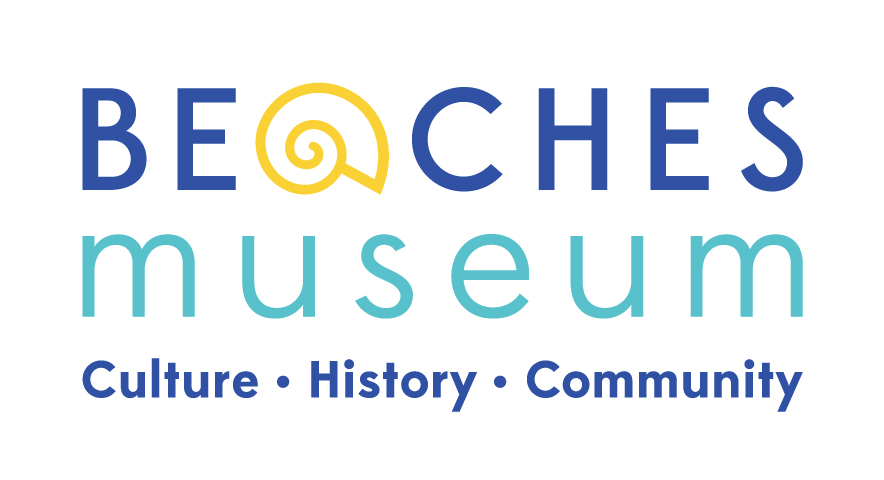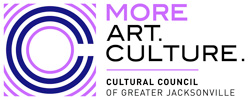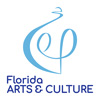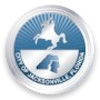Tours
For a docent-led tour of the History Park and the interiors of the historical buildings, check in at the Museum lobby between 10am and 3:30pm Tuesday through Saturday, or Sunday 12pm to 3:30pm.
If you would like to visit the park after hours, a self-guided tour of the park is available on your personal device HERE.
Tours are free, however cash or debit card donations are accepted in the Lobby.
1903 Pablo Beach Post Office
This 1903 post office was the first stand-alone post office in Pablo Beach. It was originally located two blocks east and one block north. Mrs. Celenia Dickerson was the postmaster in this building. The building was used from 1903-1909, and by 1917 it had been moved to Second Street South and became part of a home. In 1986 Eagle Scout Scott Chandler and his crew helped prepare the building for its move to Pablo Historical Park.
The 1911 Train Engine
The 25 ton steam locomotive was built by H. K. Porter and Company of Pittsburgh, Pennsylvania in March 1911 as Serial Number 4845. It was manufactured for the W.W. Cummer & Sons Lumber Company of Dade City, Florida and operated near Lacoochee, Florida. It was used to haul pine and cypress logs in Pasco County, near Tampa. The tools on the back of the tendercar are track and logging tools.
It has a 2-6-0 wheel configuration indicating two wheels in the front, six under the boiler, and none under the cab. This locomotive is typical of a steam locomotive of the early 1900s.
It was donated to the Beaches Museum in 1981 by the City of St. Augustine where it had been on display for 21 years. It was moved here from St. Augustine in 1982, and is now displayed near the original location of the Jacksonville and Atlantic Railroad tracks, which became the Florida East Coast Railway.
A passenger train would have had a similar locomotive and tender. The baggage cart in the back of the station is filled with luggage from the era of the train.
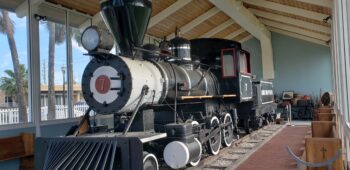
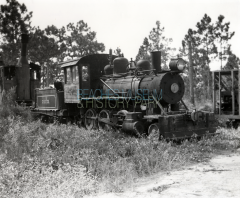
Mayport East Coast Railway Depot
This circa 1900 building stood in Mayport as the terminus point for the Florida East Coast Railway spur line to Mayport. Mr. Henry Flagler bought the Jacksonville and Atlantic Railway, expanded it to standard gauge and extended it to Mayport.
The spur line was in operation from 1900 to 1932. The upper portion of the building is the freight room. The double door on the front allowed for freight to be off-loaded directly into the room with double doors on the back for pick-up. The lower portion of the depot housed the stationmaster’s office and waiting room.
After the rail line ceased operation to Mayport this building was used as part of a home and a bar and restaurant. It was moved from the port area in Mayport to the end of Pearl Street, and then to the Beaches Museum in 1981.
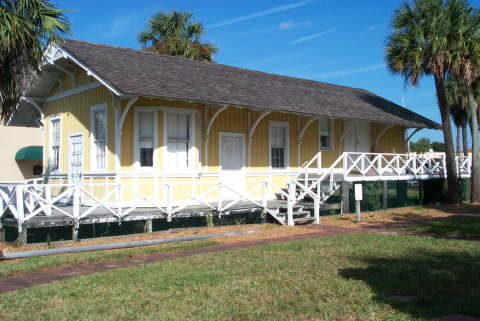
East Coast Railway Foreman’s House #93
1900 Pablo Beach Florida
The Florida East Coast Railway (FEC) constructed this 1 ½ story, wood frame structure in 1900 at Jacksonville Beach (then known as Pablo Beach) as a residence for their section foreman. The house was originally located on the northwest corner of Railroad Avenue (now Beach Boulevard) and 6th Street North (one-block west of its present location).
From 1915-1922, Hershel Smith, the Section Foreman whose history is best known, lived in the house with his wife Ethel and their two daughters, Lynn, and Jane.
The two bedroom, living room, dining room, kitchen and attic floor plan was used by the Florida East Coast Railway Co. from Northeast Florida to Key West. All their structures were painted colonial yellow, including #93. This house had no indoor plumbing or electricity while used by the FEC. Water was drawn from a pitcher pump in the back yard (see sample pump in the back hall). A stove in the front room and probably one in the dining room heated the house. Cooking was done on a wood stove in the kitchen.
In 1933, after the railroad was no longer in service to the beach, William T. Brown purchased the house at auction for $60. Mr. Brown moved the structure to First Street South in Jacksonville Beach. Plumbing and electricity were installed after 1933 (when the house was no longer used by the Florida East Coast Railway). In December 1978, Mr. Brown offered the house to the Beaches Area Historical Society. He documented that the house was Florida East Coast Foreman House #93 and that it was constructed ca. 1900. It was moved to Pablo History Park in 1979.
An engineering report of 1916 shows the value of the house as $997. In 1913, $590 of remodeling was done, and in 1923 a porch was added at a cost of $115, resulting in a total estimated value of $1,702 for the house.
None of the furnishings are original to the house or the families that lived there.
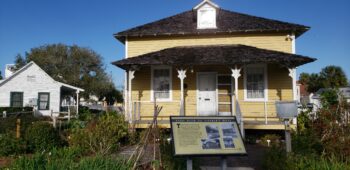
The Oesterreicher-McCormick Cabin
Built in 1873 on Twenty Mile in Palm Valley, the Oesterreicher-McCormick Cabin is one of the area’s oldest examples of Florida Cracker architecture. Under threat of destruction to make way for a development, the Cabin was identified by the Beaches Museum not only for its historic significance, but for its potential as a support building within the History Park.
The cabin was donated to the Museum and a very successful capital campaign to provide for restoration ensued. Great care was taken to preserve as much of the craftsmanship and original features of the Cabin as possible while bring it up to modern-day building codes and requirements.
Opened to visitors in November, 2016, the Cabin has proved to be not only an ADA compliant bathroom and gathering area, but also a fascinating glimpse in to pioneer life in Florida for visitors, school groups, and the community.
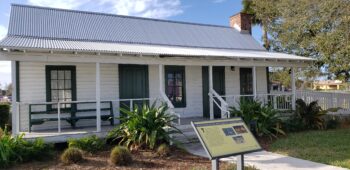
Heritage Garden
The garden was established in 2008 by two Master Gardeners, Marilyn Wilson and Sylvia Simmons. In February 2008, a partnership with the Beaches Museum and the Duval County Extension Master Gardener Volunteer Program was proposed to create a demonstration garden. The purpose would be to demonstrate a sustainable kitchen garden, circa 1920, and to educate the community on the history of edible landscapes and sustainable garden practices. The demonstration garden was named the “Heritage Garden”.
Today the Heritage Garden consists of 6 garden areas in the Beaches Museum Historical Park.
The Bromeliad or Shade Garden is located in front of the Foreman’s House back porch. There are 20 varieties of colorful Bromeliad plants in this garden area.
The Herb Garden is across from the cabin. This garden offers a sampling of herbs for culinary uses as well as a selection of herbs having a history of medicinal uses.
The Vegetable Garden occupies the area on the west side of the Foreman’s House. This garden replicates a circa 1920 kitchen garden. The purpose is to demonstrate and educate the community on the history of edible landscape and sustainable garden practices which include utilizing organic amendments, crop rotation and solarization.
The Perennial Garden is located on both sides of the Foreman’s House front porch and along the east side of the building. The garden consists of Florida Native and Heritage plants seen in the Beaches area in the 1920s. An interesting plant is the Coontie Palm which dates back to Florida’s earliest residents who crudely processed the plant to make a starch that was used to make bread.
The Rose Garden is between the Foreman’s House and the Depot building. This garden provides a variety of beautiful roses from the early 19th century to present day. Some favorites are Assesblage de Beaut which is a small pink rose, Hybrid Tea-Folklore (1977) and Hybrid Angel Garden rose.
The Butterfly Garden is the area along the west and southwest sides of the Depot building. This garden is dedicated to providing habitat, nectar and host plants for butterflies in our Beaches area. The garden has 5 varieties of Milkweed, 2 are native to Florida, along with numerous other plants to attract pollinators.
The Heritage Garden is an award winning garden, recognized in 2008 by the City of Jacksonville as an outstanding example in “Greenspace Additions”. In 2012 the garden was awarded the distinguished “Outstanding Demonstration Garden Award” for its exceptional educational impact and contributions to the goals of community education by the UF/IFAS Florida Master Gardener Volunteer Program. Today 30 Master Gardener volunteers maintain the Heritage Garden giving over 2,000 volunteer hours annually.
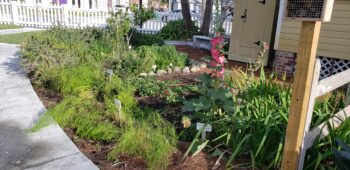
Beaches Museum Chapel
We have moved the St. Paul’s By-the-Sea/Beaches Chapel, one of our Oldest Historical Structures on the Beaches, to the Beaches Museum. The chapel was moved on June 17, 2012.
The chapel is now available for events. We have had weddings and other meetings in the chapel. If you are interested in renting the chapel for a Jacksonville Beach Wedding, you may contact us for the full details.
The chapel has a rich story at the beaches. The location at the history park is its fourth location at the beaches, and its fourth “official” move. The chapel was moved twice while at its second home (once to turn it 90 degrees). The chapel started out at Second Avenue and Second Street South when it was built in 1887 in Pablo Beach (Jacksonville Beach now). In 1952, it was moved to 11th Avenue North and Fifth Street in Jacksonville Beach (previously Pablo Beach). In 1960, it was turned to face Patricia Lane. In 1970, the chapel was moved to 610 Florida Boulevard in Neptune Beach. Beaches Chapel built up around the small building, and finally the chapel was moved June 17, 2012 to the Beaches Museum.
Timeline:
St. Paul’s By-the-Sea/Beaches Chapel
- 1886
- No church at beaches
- Episcopal services held at Murray Hall Hotel
- Hotel guests & Pablo Beach residents raise $800
- Architect Robert S. Schuyler contacts JJ Daniel, Pres of Atlantic RR to give land for building site
- Additional $800 raised
- 1887
- St. Paul’s By-the-Sea dedicated So. Second St.
- One of the oldest churches & one of the oldest buildings at the Beaches
- A mission church (no regular priest of its own)
- Vacant only two years: 1904, 1923 (excellent memories of 1923 period in Times Union article July 18, 1970)
- 1925
- Church services are provided year round; previously only in summer months
- Church probably acquires it first own bell after year round services are offered; previously, probably used a bell from the railroad.
- 1940
- Church officially becomes a parish
- 1952
- Church building moved from Pablo Beach/Jacksonville Beach to North 11th Ave at 5th Street (a few years later turned to face Patricia Lane and enlarged by splitting in half and adding a 24 foot section in between)
- 1967
- New St. Paul’s By-the-Sea dedicated replacing use of the small chapel
- 1952-1970
- Somewhere between these times, the belltower was removed, believed to be damaged by fire.
- 1970
- 1887 Church moved for 3rd time after Vestry voted to give building to Central Christian Church at the Beaches for $1.00, and located it at Florida Boulevard at 5th Street, Neptune Beach
- 1974
- Name changed to Beaches Chapel
- 2004
- Letter including moving operations costs re BAHS
- 2007
- June 24 – Original bell used on this Sunday service after installation in the Memorial Garden. The bell had been in storage since the 1970s when the chapel was moved. Inside the bell, a casting date of May 10, ’01 is found.
- 2012
- June 17th – Chapel moved to Pablo History Park
- July – Belltower Reconstruction begins
- 2013
- January – Belltower Reconstruction complete
- Feb – Chapel repainted
- April – Patio and Sod laid
- October 20 – Official Inauguration Ceremony

